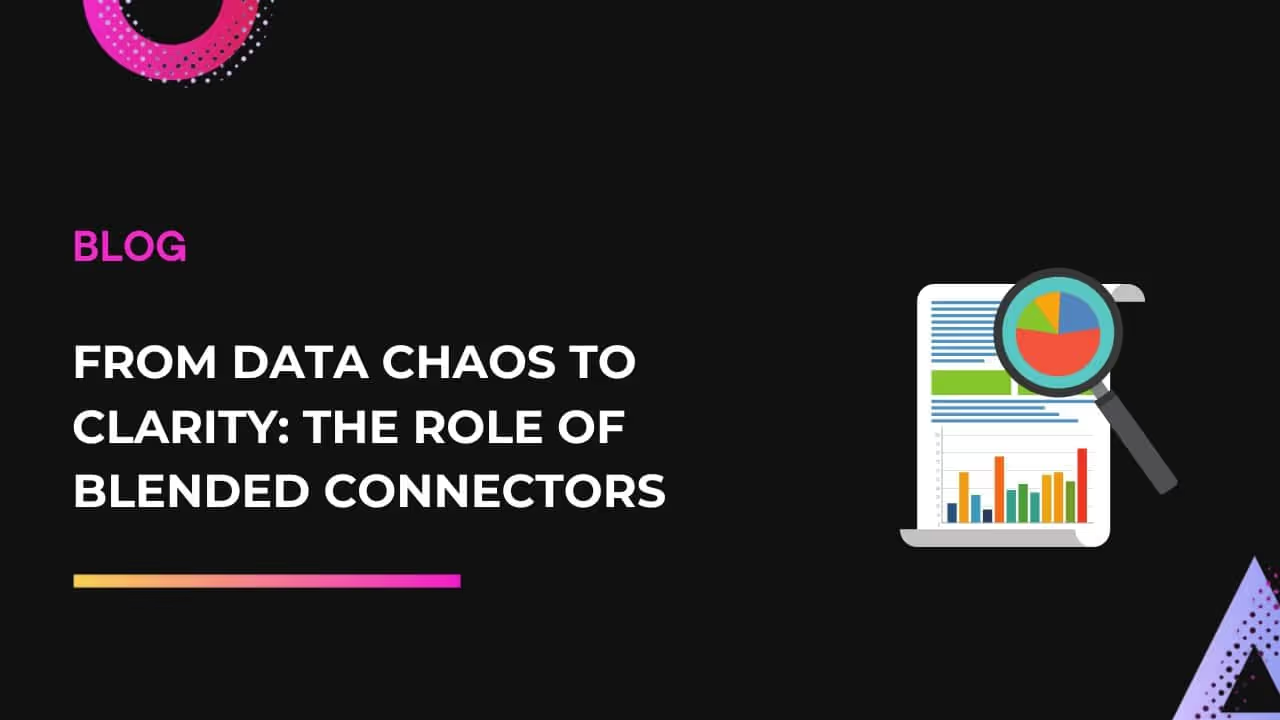Blended connectors are an essential solution for companies dealing with large volumes of data from various platforms and sources. Today, companies encounter a vast amount of data produced at an incredibly fast rate. This information holds great promise but is frequently spread out across different platforms and types.
Traditional methods of combining data struggle to keep up with the diverse and ever-changing modern data sources. As a result, businesses may become overwhelmed by isolated data collection, making it very hard to find and use valuable insights. Blended connectors help bridge this gap by seamlessly integrating data from multiple sources, ensuring smooth and efficient access to critical information.
What are Blended Connectors?
Blended connectors are sophisticated tools that seamlessly integrate data from various sources into one dataset while preserving their unique characteristics. This approach allows businesses to see a complete picture for making informed decisions. Unlike older connectors that operate independently, blended connectors merge data from multiple sources instantly, ensuring that the combined data is up-to-date and comprehensive.

Example of How Data Blending Improves Business Intelligence
Imagine a typical e-commerce company that wants to improve its marketing strategies and maximize return on ad spend. Without data blending, its marketing efforts would be disorganized. Data would be scattered across different platforms such as Google Ads, Facebook Ads, Twitter Ads, Google Analytics, and sales systems. This fragmentation leads to inconsistent metrics and a slow, manual data gathering process.
As a result, decision-making is delayed, budget allocation becomes inefficient, and there's a problem of optimizing ad spend and campaign strategies. Ultimately, this impacts profitability in a negative way.
To solve these issues, the company integrates data from all these sources into a centralized BI platform with data blending. This includes ad spend, impressions, clicks, conversions, website traffic, user behavior, and sales data.
Advanced analytics dashboards provide real-time insights into channel performance, customer journeys, and segment analysis. With these insights, the marketing team can optimize ad spend, personalize campaigns, and conduct rapid A/B testing. Moreover, predictive analytics helps anticipate future trends and customer behaviors.
As a result, the company sees a significant increase in ROAS (Return on Advertising Spend), better-targeted campaigns, and substantial cost savings. Thus, data blending in BI enables the company to break down data silos, achieve a unified view of marketing performance, and make informed decisions, leading to increased profitability.
Implementing Data Blending Connectors for Your Business
Implementing blended connectors involves these key steps:

1. Identify Data Sources: Begin by identifying relevant data sources like databases, cloud storage, APIs, and spreadsheets. Understand their structure and accessibility to choose suitable blending connectors.
2. Select Tools: Choose data blending tools supporting a wide range of sources and compatible connectors, such as Dataslayer for simplified integration.
3. Ensure Compatibility: Verify blending connectors match your data sources and IT infrastructure, considering formats, protocols, security, and scalability.
4. Build Pipelines: Develop robust data pipelines using blending connectors for ETL processes to ensure data integrity and consistency.
5. Optimize Performance: Fine-tune connectors and pipelines, scheduling refreshes, using caching, and employing parallel processing to improve efficiency.
6. Ensure Data Quality: Implement validation and cleansing procedures to maintain high standards across blended datasets.
7. Monitor and Iterate: Continuously monitor connector performance, establish metrics and alerts, and adjust based on feedback and business needs.
8. Train Employees: Provide training and support for employees to utilize blended data for analysis and decision-making effectively.
Discover Data Blending with Dataslayer
Dataslayer provides an easy-to-use platform for blending data from different sources. Users can connect to various data sources, blending their contents smoothly. Our tool allows users to prepare and create data mashups, discover relationships between data sets, and prepare reports on the platform of your choice quickly and easily. With reliable data at your fingertips, you can concentrate on analyzing and visualizing your metrics. Schedule a call today to learn how Dataslayer's blended connectors can improve your business strategies.







